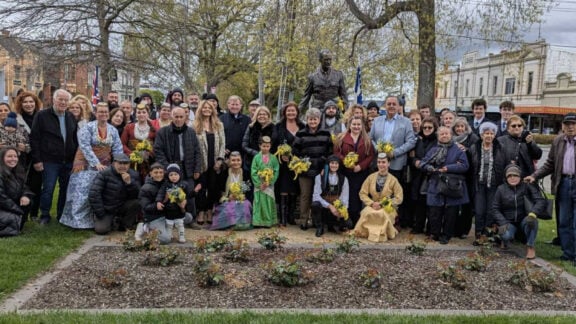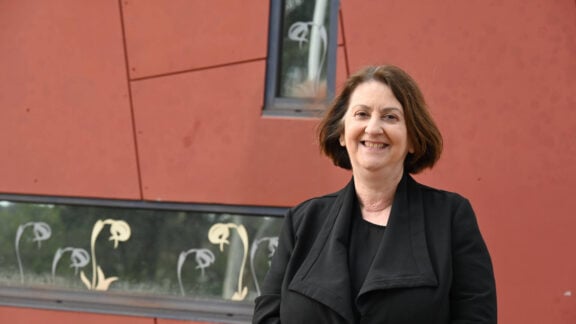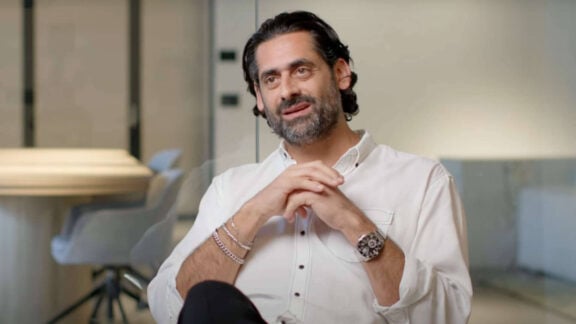How did you start your career in architecture and how did you decide to become a conservation architect?
I have this image of myself, aged nine, showing a picture that I had drawn of our house to my parents; I had spent all afternoon across the street drawing. I announced then, that I wanted to be an architect.
RMIT was a great place to study architecture in the late 1970s. My main interest lay in the recycling of buildings and architectural design within an existing context; be it a city, a building or an environment.
However, jobs in building recycling and energy conservation were scarce.
I pursued a career in heritage conservation instead and was able to transfer my interests of material science into fabric conservation.
My then employer and mentor, Richard Falkinger, guided me towards further studies. I also assisted Richard with the conservation of St Patrick’s Catholic Cathedral, Melbourne (c1858) and was able to apply my knowledge of fire safety on this project.
We worked on St Patrick’s Cathedral for more than 15 years.
Fifteen years ago, I became a director of Falkinger Andronas Architects, Heritage Consultants and I have been sole director for almost 10 years.
We are entering a new phase of our practice, and we wish to mark this transition with a change to the new business name Andronas Conservation Architecture.
What are some of the projects you have worked on?
Over the past 25 years, we have had the opportunity to conserve a great number of historic buildings, including The Block Arcade, ANZAC House, Newman College at Melbourne University designed by Walter Burley Griffin (the man who designed Canberra) and the stained glass at Flinders Street Station (above the clocks).
We have undertaken the conservation and liturgical reordering of more than 50 historic churches thoughout Victoria and South Australia and have recently completed a new church building for the Lebanese Maronite Community in Thornbury, and a new community centre in St Kilda.
We also assisted Fr Andrea at Malvern erect the spires on the church of St Catherine, though the design was that of Morea Architects.
In every case, we argue to conserve the significant fabric, but acknowledge that buildings need to evolve to remain viable and adapt to new ways of being used.
You’ve recently been awarded with the Heritage Architectural Award for your work on St Paul’s Cathedral. Could you elaborate on the challenges that you faced in working on this project?
Since 2001, our office has been working on the restoration of St Paul’s Cathedral, across the street from Federation Square, for which we received last week the Australian Institute of Architects Victorian Chapter Heritage Architecture Award 2009.
The biggest issue at St Paul’s was getting access to the spires.
We had mountain climbers on the outside of the spires with ropes and camera gear recording the condition of the stonework, while I was in a van in the carpark directing the show from a TV monitor and CB radio.
We had more than 20 DVDs of data, which needed to be transferred to drawings so that we could get the works priced.
The erection of the scaffold was a challenge in itself. A temporary lift was set up in the middle of the church, which took stone masons to their work site up above the city.
What are some of your future projects?
I am certain that many Hellenes would remember the Astor Theatre on Chapel Street St Kilda. We are currently undertaking a study for the restoration of the Astor Theatre in St Kilda for St Michael’s Grammar School, where the erudite Stathis Raftopoulos ran as a Greek Cinema from 1967.
Our work in the restoration of the facades to Newman College at the University of Melbourne will continue for the next three or four years, assuming the funding is maintained. These sorts of projects often take twice as long to restore than it took to build in the first place.
We have already commenced the restoration of the 1927 Manchester Unity Building, on the corner of Collins and Swanston Streets in the city, starting with mundane but necessary works on the roofs and the lifts. We expect that we will soon be cleaning the exterior facades.
Minister for Employment Participation (NSW), Senator Mark Arbib announced last week that the new environment centre we designed for the Scout Association at Gembrook, Victoria received funding of $375,000 to proceed, which is also very exciting news as we have been trying to get this project off the ground for the last three years.
What are the secrets for a long and successful career in architecture?
Architecture is perhaps a combination of art and building, and art requires passion.
Passion is also required to be combined with persistence to see a project through the difficult times, because architecture is the physical realisation of ideas and solutions.








